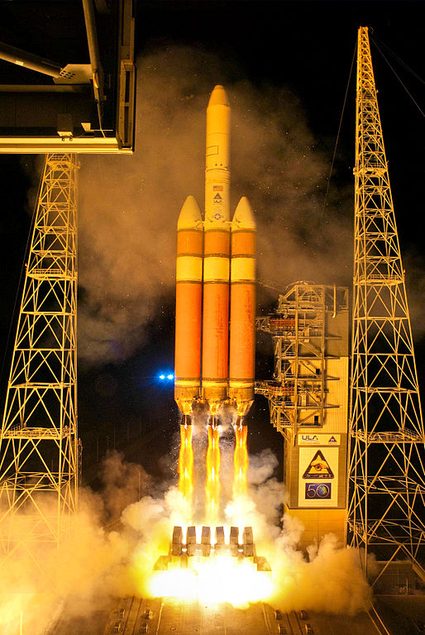Rocket Thrust Calculator
Rockets propelled us to the star — almost: with our tool, you can learn how to calculate the thrust of a rocket. You will meet the equation, learn how to calculate the thrust of a rocket and its element, the importance of pressure, mass, and velocity on the performance of a rocket, and an example of the application of the rocket thrust equation. In no time, you'll be on the launch pad for your journey in rocket science! Because after all, this is...
...rocket science! The physics behind the operations of a rocket and the rocket thrust equation.
Humanity had been using rockets since about the XVI century: rudimentary self-propelled weapons, but with everything that would make you identify them as rockets. Only in the late XIX century did we get a mathematical description of their principles of operation and, even later, a solid understanding that allowed us to send humans into orbit and beyond.
Rockets are conceptually simple: their operations entirely depend on Newton's third law of motion. According to the law., forces are always paired: for every force, you can find another one with the same magnitude and opposite direction. A rocket expels its exhaust with a given force from the back; consequently, the rocket experiences a forward, propelling force.
The rocket thrust equation
The formula for the thrust of a rocket considers many fundamental factors affecting the performance of a rocket. Let's first see the equation for the rocket thrust and then analyze its components.
Where:
- — The calculated rocket thrust;
- — The variation of the rocket mass with time;
- —The velocity of the exhaust at the nozzle;
- — The area of the nozzle;
- — The static pressure at the rocket exhaust; and
- — The pressure of the environment where the rocket is traveling.
🙋 Pressure is often measured in megapascals, though there are many different measurement units for this quantity: learn how to switch between them with our pressure converter!
The rocket thrust equation is not easy: many variables are playing, with different roles and effects.
The equation for the rocket thrust can theoretically be used to calculate the rocket's acceleration using Newton's second law. However, since the mass of the rocket decreases, we need to reason slightly differently.
The effect of the mass variation in the formula for the thrust of a rocket
A rocket gets lighter as it goes higher: this feature is fundamental in the calculations of the rocket thrust equation, and we talked about it in detail in our rocket equation calculator.
In the formula for the thrust of a rocket we used in our tool, you can either insert the mass loss rate or calculate this value from the variation in mass in a given amount of time.
Pressure in the rocket thrust equation
A rocket is a powerful machine able to climb from sea level to the depth of space. While the story is more complex, it's generally true that rockets are engineered to operate at varying pressures. That's the reason for the existence of the pressure term in the rocket thrust equation.
We multiply the difference between the pressure inside the nozzle and the environmental pressure by the surface of the nozzle: the interface between the rocket and the outside world. The higher the pressure difference, the higher the thrust: rockets are more efficient at higher altitudes.
Using the rocket thrust equation: an example in real life
Choose your rocket — we went for the Delta IV heavy rocket — and follow the next steps!
- Gather the data for the rocket thrust equation:
- Mass variation: in ;
- The exhaust velocity:
- The pressure in the nozzle: ;
- The pressure of the environment depends on the height. We will test the rocket thrust equation at sea level pressure: ;
- The area of the nozzle: .
Plug these values in the rocket thrust calculator to find the resulting thrust:
The RS-68A has one of the highest thrusts in the world. And each Delta IV Heavy mounts three of them. Notice that we gave the thrust of the rocket in kilonewtons. Learn about the conversion between force units with our force converter. We conclude with an image because we think that night launches of rockets are awesome!

Now you know how to calculate the thrust of a rocket: why not look further? Maybe into orbit? Check our Earth orbit calculator for your next step!